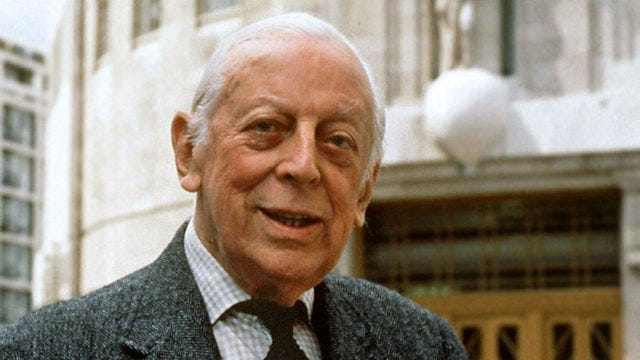Before kicking off:
One of the most frequent questions I hear is a very simple — but sensible — one:
“Should our brand use humour?”
To help clients, I devised a set of 11 statements: you simply read them, note down how much you agree or disagree, and count up your scores at the end. I thought it might be helpful to share it. I’m doing this first via Brands & Humour as a way of saying thanks for tuning in every week and for all of you readers, from Baltimore to Bangalore, who get in touch with feedback, questions, and funny ads.
If you want the British English version (so spelt ‘humour’) it’s here:
If you’re sunning yourself on Miami Beach (hey, lucky you), your American English version is here:
Should you have any questions, just give me a bell or email (contact details below).
Now, down to business!
***
This week is the first of a three-parter on radio ads. I felt I wanted to do something in-depth on the subject, so today there’s a bit of an overview, next week is a Q&A with an outstanding writer of radio ads, and the final week is a look at a famous brand, Old Spice, and how they’ve made radio and TV work together.
…Long pre-dating TV, radio is hardly a new advertising channel, but it’s often considered the runt of the litter. Radio ads, to me at least, conjure up hasty promotions, often of a local service, with legalwordsrammedintothelastfive-secondsorso. The writing seems homespun and hokey; the angle of attack tired and boring.
And yet, radio is massively underestimated.
Three reasons:
One, it’s cheap. In terms of production, it’s a tiny fraction of what a TV ad would cost. You want a volcano going off in a Caribbean island while a space rocket soars to Mars in the background? If you’re doing a radio ad, it’ll cost you next to nothing.
Two, it’s effective. The UK’s Radio Advertising Bureau (RAB) claims it delivers a very handsome £7.70 on every £1 spent1. ‘Radio delivers a larger audience than other media throughout the morning and is used by people to accompany tasks and activities across the day, making it easier for brands to reach people at relevant times and in relevant places.’2
And thirdly, it’s when done well, it’s very creative. Why? This blunt answer is because it needs to be. When sound is the only form of communication a business has with customers, it means advertisers need to work damn hard. This ad for Olay (click here to hear it) isn’t necessarily a funny ad, but it’s a phenomenal example of great writing, pared down production — just a voice and a ticking clock — and a razor-sharp conclusion. You just don’t know where it’s going to go until the final seconds.
Among humorous ads, the one below, for GEICO, takes a classic children’s question (‘Where do babies come from?’) and spins it out into strange territory, before tying it up neatly with the final line (‘…because saving 15% on car insurance is always a great answer’). Not many ads for multi-billion dollar brands are this experimental.
Meanwhile this Volkswagen ad takes an iconic voice — that of Stephen Hawking, the late, great physicist — and a simple message: Volkwagens are great value. Imagine you’re listening to the radio and this comes on. You’ll stop. You’ll listen.
But one of my all-time favourites is for Matlock: an American crime drama that ran from the mid-80s to the mid-90s. How do you advertise a crime show on the radio? The answer? Present a potential crime: a caller calling in to say his wife was missing. Its relevance to the show is spot-on.
And get this: it’s a 60-second ad that mentions the channel of the TV show three times, the name of the show six times and the time of the show no fewer than eight times. But it never feels repetitive. Believe me, that’s some achievement.
The great broadcaster Alistair Cooke (below) once joked that he preferred radio to TV, ‘because the pictures are better’. A fine point.
In sum: cheap to produce, highly effective as an advertising medium, the chance to flex your creative muscles, and better pictures than TV?
Radio’s been the underdog for way too long.
Many thanks for reading,
Paddy
Book a meeting with me here / www.studiogilmore.com / pg@studiogilmore.com / +44 7866 538 233 / Twitter: @mrpaddygilmore
Op. cit.



